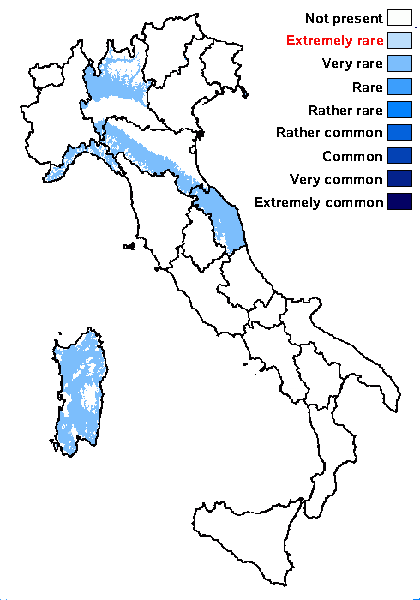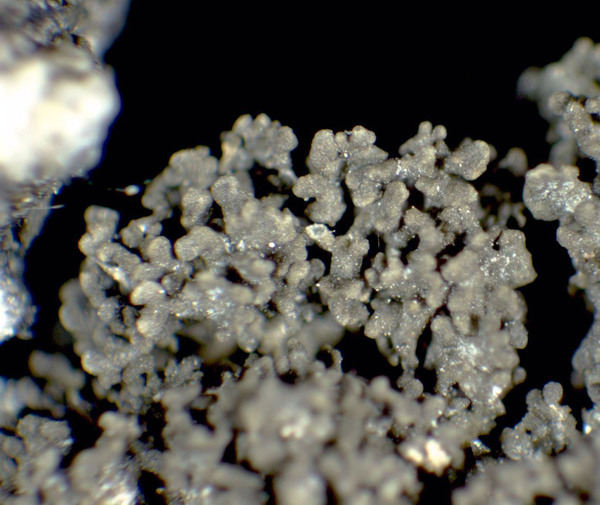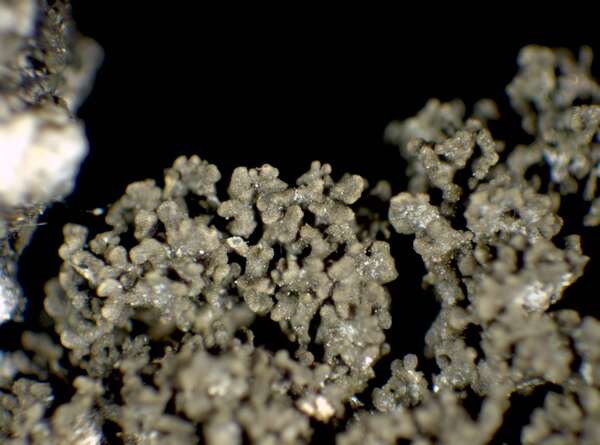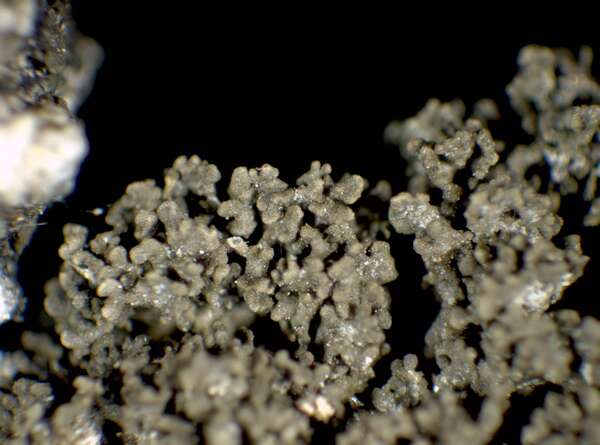Scytinium biatorinum (Nyl.) Otálora, P.M. Jørg. & Wedin
Fungal Divers., 64, 1: 290, 2013.. Basionym: Collema biatorinum Nyl. - Act. Soc. Linn. Bordeaux, 21: 268, 1856.
Synonyms: Leptogium biatorinum (Nyl.) Leight.; Leptogium cretaceum (Sm.) Nyl.; Leptogium pusillum Nyl.; Polychidium cretaceum (Sm.) Trevis.; Polychidium pusillum (Nyl.) Trevis.
Distribution: N - VG (Castello 2002, Martellos & Castello 2004), Lomb, Emil (Fariselli & al. 2020), Lig. C - Marc, Sar.
Description: Thallus small-squamulose to granular-crustose, brown to blackish brown, usually forming a thin crust of rosette-like, 0.3-0.5(-1) mm wide, 50-120 µm thick squamules with crenate margins, which sometimes are reduced to 0.05-0.1 mm wide granules. Pseudocortex consisting of a single layer of irregularly isodiametrical, angular cells; algal layer with broad, short-celled hyphae throughout. Apothecia common, biatorine, laminal, sessile, (0.2-)0.3-0.4(-0.5) mm across (rarely more), with a blackish brown, concave to flat disc and a thick proper margin. Proper exciple paraplectenchymatous; epithecium brownish; hymenium colourless, 70-90 µm high, I+ blue; paraphyses coherent, mostly simple, the apical cells slightly swollen; hypothecium colourless. Asci 8-spored, cylindrical-clavate, the apex strongly thickened, the apical dome K/I+ pale blue, with a downwardly projecting K/I+ deep blue tubular structure. Ascospores submuriform, usually with 2 transverse septa, hyaline, broadly ellipsoid, (23-)25-30(-32) x (8-)11-14(-16) µm. Photobiont cyanobacterial (Nostoc, the cells in clusters or in short chains). Spot tests: all negative. Chemistry: without lichen substances. Note: a temperate ephemeral lichen of disturbed habitats, most frequent on concrete walls, but also found on calciferous soil; certainly more widespread but overlooked, or confused with other species
Growth form: Crustose
Substrata: rocks, soil, terricolous mosses, and plant debris
Photobiont: cyanobacteria, filamentous (e.g. Nostoc, Scytonema)
Reproductive strategy: mainly sexual
Pioneer species
Commonnes-rarity: (info)
Alpine belt: absent
Subalpine belt: absent
Oromediterranean belt: absent
Montane belt: absent
Submediterranean belt: very rare
Padanian area: absent
Humid submediterranean belt: very rare
Humid mediterranean belt: absent
Dry mediterranean belt: absent

Predictive model
Herbarium samples
Growth form: Crustose
Substrata: rocks, soil, terricolous mosses, and plant debris
Photobiont: cyanobacteria, filamentous (e.g. Nostoc, Scytonema)
Reproductive strategy: mainly sexual
Pioneer species
Commonnes-rarity: (info)
Alpine belt: absent
Subalpine belt: absent
Oromediterranean belt: absent
Montane belt: absent
Submediterranean belt: very rare
Padanian area: absent
Humid submediterranean belt: very rare
Humid mediterranean belt: absent
Dry mediterranean belt: absent

Predictive model
| Herbarium samples |
 INDEX FUNGORUM
INDEX FUNGORUM
 GBIF
GBIF





